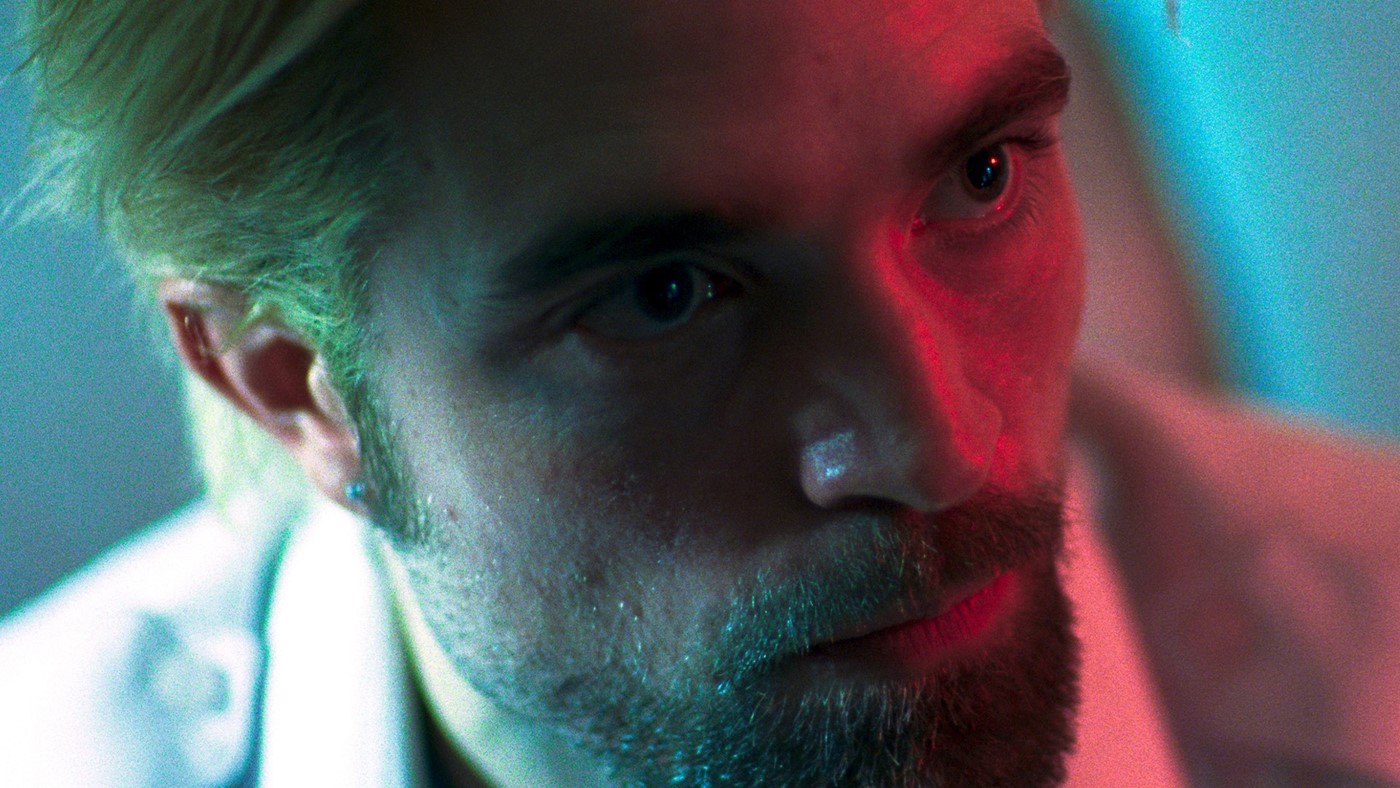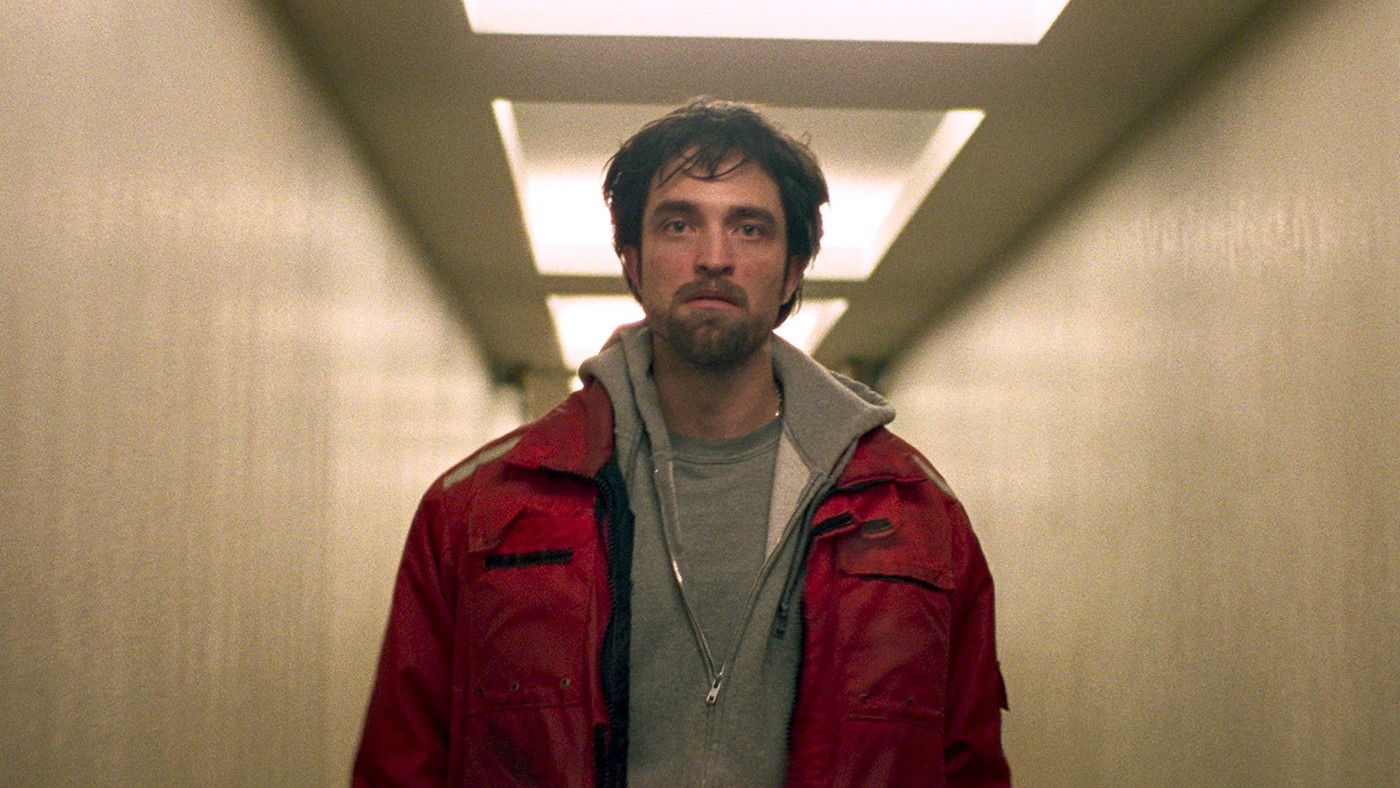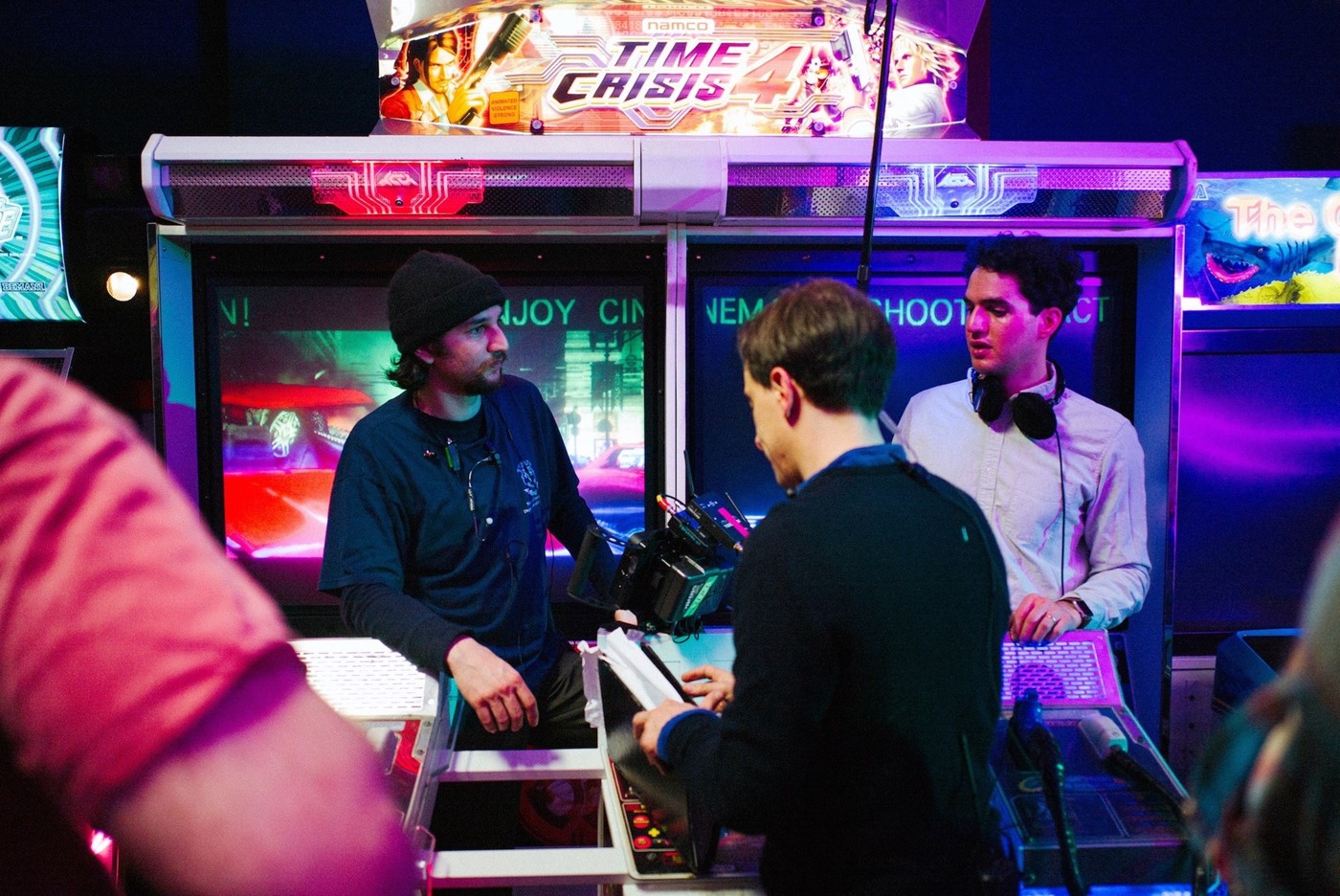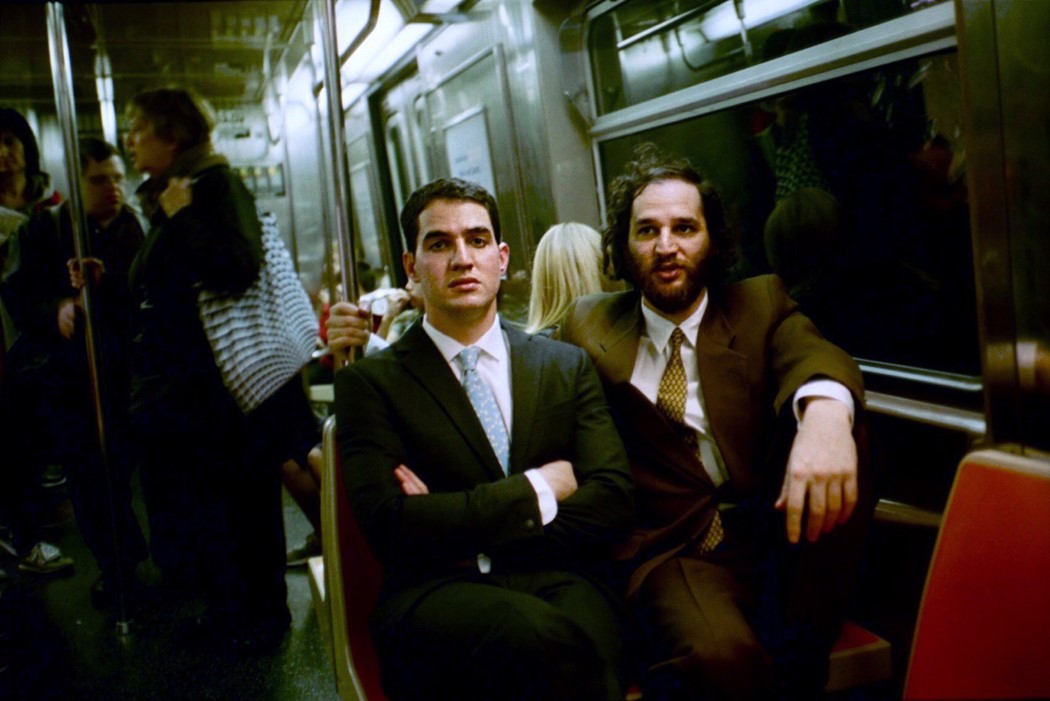How the Safdie Brothers Became Hollywood’s Latest Powerhouse Siblings
The directing duo behind ‘Good Time’ reveals how their movie-obsessed dad passed on his love for unusual camera hijinks
The Safdie brothers will be the first to admit that their desire to capture shreds of reality on celluloid can verge on the “stubborn” and “obsessive”. Ever since their debut feature The Pleasure of Being Robbed premiered at SXSW ten years ago this month, these New York siblings and film festival fixtures have shown an utmost commitment to sharing gritty stories of the delinquent and the disenfranchised, be they lonely kleptos, dysfunctional dads or Upper West Side heroin addicts. “We’ve been making these movies that are totally embedded within reality,” says the more hirsute, older brother Josh, “because reality is where we’re interested in telling stories. Of course, it’s our own skewed version of it.”
Their breakout quasi-vérité feature, 2014’s Heaven Knows What, presents a balls-to-the-wall love story unfolding within the city’s heroin subculture, loosely based on the life of lead actress Arielle Holmes (who penned the unpublished memoir Mad Love in New York City upon the Safdies’ request). Their latest effort, the adrenaline-fuelled crime drama Good Time, has former Another Man cover star Robert Pattinson cast against-type as a derelict, peroxide-dyed bank robber on a desperate all-night crusade to get his developmentally disabled brother (played by Ben Safdie) out of jail, following their botched heist. To give life to a film rooted in reality, which bolts across plot points at such frenetic speed, the Safdies not only clocked in 18-hour days on set, but also found their cast in halfway houses, among former correctional officers and, as is very much in keeping with their neo-realist tales, by banking on complete unknowns they found through street castings.
“There’s a performer in a lot of people and there are stars everywhere. People just don’t know them,” Josh tells me when I ask what draws them to untrained talent. “Audiences are meeting these people for the first time, as the character the movie is telling you they are. Gladys Mathon [a Queens resident of Haitian descent whom they cast in a memorable turn as a grandmother] doesn’t have grandchildren, she doesn’t know anything about that life, but there are some people who are just so deeply themselves that they can’t help but perform in such an authentic way.”

An exhaustively documented childhood
And the Safdies have quite a unique vantage point on the matter of performing authentically. Having grown up between their father’s home in Queens and their mother’s Manhattan abode, they recount how their film-enthusiast father planted the seed of using movies as a tool for self-reflection. “Our dad wanted to be a filmmaker; he was obsessed with movies,” recalls Josh. “When he lived in Paris, he would cut school all the time to go see Taxi Driver or the new Truffaut film. He saw movies as modern gospel.”
Given that English was his third language (after Italian and French), Alberto Safdie would often turn to films to explain what he was unable to convey through words. “When he was in the midst of his custody battle,” remembers Ben, “he would show us Kramer vs. Kramer and say, ‘I’m Dustin Hoffman and your mom is Meryl Streep’. So in our childhood, we used movies to understand the world. I don’t think it was conscious on his part, but now that we look at it, it was all very formative.”
Any Safdie fan who’s screened their second, partly-autobiographical feature, 2009’s Daddy Longlegs, about a divorced and supremely irresponsible dad, knows the Safdies’ father-son dynamic is a fraught one at best. “I think Daddy Longlegs, for both Ben and I, was a reflection on the past without any shred of sentimentality,” explains Josh. “It was taking the memory outside of the brain, cutting it up, looking at it under a microscope and being very vicious about it.”

A hunger for tinkering with reality
In conversation, the directing duo paints the portrait of a man who regarded his sons as an extension of his own youth. When Safdie senior got a raise at work, he immediately bought a camera and started filming Josh and Ben incessantly, in set-ups as wacky as waking them up in the middle of the night to instigate on-camera fights(!). Needless to say, Josh and Ben were not amused. “We resented that he chose documentation over actual coexistence,” Josh sums up. “He would ask me to do something that would rile up my brother in the name of good footage. And this was way before the dawn of YouTube, so it was very pure. He would always repeat, ‘one day, these are going to be very valuable to you.’ When he kind of stepped out of our lives as teens, he gave us all the tapes and we watched them. It was a difficult but also a very educational experience. Even though we hated being on cam all the time, we grew to regard it as natural, and that led to our obsession with naturalistic performances, in a weird way.
In the context of Good Time, that naturalism meant rolling with the punches when, for instance, a dog they’d cast in a pivotal scene had a heart attack the day before shooting. “That’s when the dog trainer told us, ‘no worries, the father can play the part.’ The father? How old is the father,” exclaims Josh in between chuckles. “Turns out that’s the way movies function when you’re constantly working with reality, and wanting to make a genre movie that’s totally embedded within real-life, 2017 America. Things start falling your way.”
That’s also what led two of America’s underground darlings to partner up with a London thesp who’d cut his teeth as the dreamy, fang-attired obsession of YA fans everywhere. Josh’s longstanding fascination with American outlaws was somehow reawakened by a very complimentary note the Safdies received from Robert Pattinson, who basically low-key implored Josh and Ben to cast him in their next project. “[Rob’s] face is obviously a classic, beautiful face, and I can only liken it to some of these criminals who show up in the back pages of tabloid newspapers,” suggests Josh. “Look at [California criminal-turned-model] Jeremy Meeks, whom they released a mug shot of. Now he’s a hugely successful model. There’s this American Dream element to the good-looking criminal. They just get a pass and you can imagine they’ve been using that their whole life. By casting Rob, we wanted to play with all these elements that exist in real life.”

Brotherly bonding over naturalism and NYC
It’s that bond for naturalism and Italian neo-realism that ended up sealing the brothers’ fate as partners in movie-making in their teens. “In high school, I was very interested in science, whereas Josh was doing film stuff, and when he made a movie, he came to me needing help with editing, because he knew I was good with computers,” recalls Ben. “This was at a moment in puberty where we were at each other’s throats, and it kind of brought us back together, because we had to do this collaboratively.”
Something they’ve always seen eye-to-eye on is the importance of chronicling New York and its outer boroughs as a vibrant, working city, as opposed to a contrived postcard. They’ve called this the sidewalk point of view. “If you’re walking down the street and you’re trying to get somewhere, you’re not looking up at the landmarks around you,” remarks Ben. “You’re looking right in front of you to see if there’s anyone in your way.” Their next project, the long gestating, Martin Scorsese-exec produced Uncut Gems, will be set in New York’s Diamond District and inspired by the tall tales their father used to share while working as a runner in the city’s jewellery epicentre.
Good Time, for its part, unfolds between Queens and Manhattan. The Safdies were keen to tap into the underdog psychology Queens has long cultivated, according to them, and which is echoed in the plight of Connie (Pattinson), the film’s single-minded hustler-protagonist. “I like to say that Queens is the tragic borough because there’s a yearning to leave it,” says Josh, while name-dropping a laundry list of artists who all hail from there (rappers Kool G Rap and the late Prodigy, Howard Stern, 50 Cent, Paul Simon and Joey Ramone). “When we moved to [Manhattan] – in a way, we made it. We got out. There are others who still live on the same block where they grew up. The tragedy is it’s not a place people aspire to live in.”
And then there’s Queens’ most notorious offspring, Donald J. Trump – the perfect embodiment of the “underdog psychology” the borough cultivates, according to Josh. The Safdies had a few choice words about their POTUS 45. “He’s from a neighbourhood called Jamaica Estates on the other side of Queens Boulevard, which looks like suburbia with little plots of land,” describes Josh. “I mean, look how he embodies Manhattan now, like ‘I made it here,’” Ben says, chiming in. “He’s an underdog with billions of dollars who’s able to capitalise on people’s discontent. He finds groups of people who are unhappy, uses that to his advantage, exploits them, ignores them, and moves on to the next thing. You can’t help but see those elements seep into Good Time.”
Good Time is now available on demand and DVD












